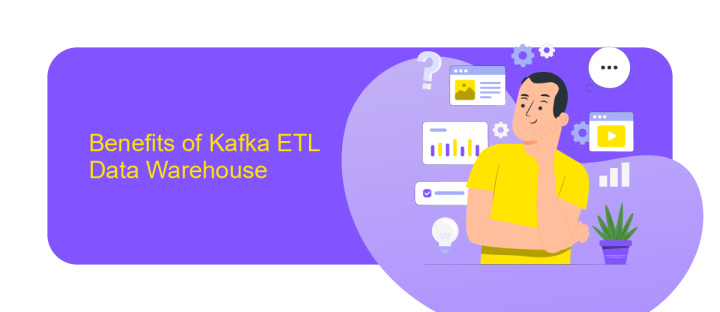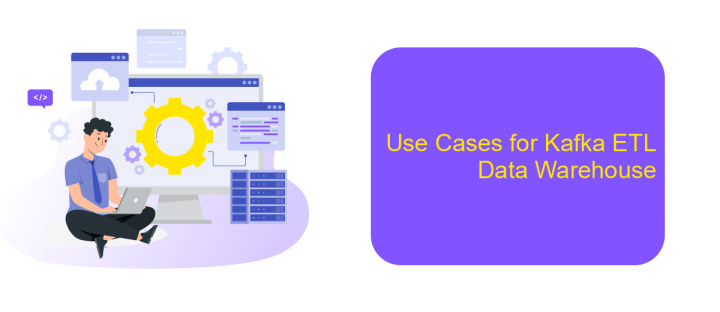Kafka ETL Data Warehouse
Apache Kafka has emerged as a powerful tool for real-time data streaming and processing, making it an essential component in modern ETL (Extract, Transform, Load) workflows. By integrating Kafka with data warehouses, organizations can achieve seamless data ingestion, transformation, and storage, enabling real-time analytics and decision-making. This article explores the benefits and implementation strategies of using Kafka in ETL data warehouse environments.
Introduction to Kafka ETL Data Warehouse
Apache Kafka has emerged as a powerful tool for real-time data streaming and processing, making it a crucial component in modern ETL (Extract, Transform, Load) data pipelines. Kafka's ability to handle high-throughput data streams with low latency makes it an ideal choice for building robust data warehouses.
- Real-time Data Ingestion: Kafka can ingest data from various sources in real-time, ensuring up-to-date information.
- Scalability: Kafka's distributed architecture allows it to scale horizontally, accommodating growing data volumes.
- Reliability: With built-in fault tolerance, Kafka ensures data is consistently delivered and processed.
- Flexibility: Kafka supports various data formats and can integrate with numerous data processing tools.
To streamline the integration process, services like ApiX-Drive can be utilized. ApiX-Drive offers seamless connectivity between Kafka and a wide range of data sources, simplifying the setup of ETL pipelines. By leveraging Kafka and ApiX-Drive, organizations can efficiently manage their data flows, ensuring timely and accurate data delivery to their data warehouses.
Benefits of Kafka ETL Data Warehouse

Implementing a Kafka ETL Data Warehouse offers numerous benefits, starting with real-time data processing. Kafka's robust messaging system ensures that data is ingested, processed, and delivered in real-time, enabling businesses to make swift, informed decisions. This real-time capability is crucial for applications requiring immediate insights, such as fraud detection, customer behavior analysis, and operational monitoring.
Another significant advantage is the scalability and fault tolerance Kafka provides. Kafka's distributed architecture allows it to handle large volumes of data with ease, making it ideal for growing businesses. Moreover, its fault-tolerant design ensures high availability and reliability, even in the face of hardware failures. For seamless integration with various data sources and destinations, services like ApiX-Drive can be utilized to automate and streamline the data flow, enhancing overall efficiency and reducing manual intervention.
How Kafka ETL Data Warehouse Works

Kafka ETL Data Warehouse integrates real-time data streaming with efficient data storage and retrieval systems. The process involves extracting data from various sources, transforming it into a suitable format, and loading it into a data warehouse for analysis.
- Data Extraction: Kafka collects data from multiple sources in real-time, ensuring high throughput and low latency.
- Data Transformation: The extracted data is processed and transformed using Kafka Streams or similar tools to meet the analytical requirements.
- Data Loading: The transformed data is then loaded into a data warehouse, such as Amazon Redshift or Google BigQuery, for storage and further analysis.
By leveraging services like ApiX-Drive, businesses can seamlessly integrate various data sources with Kafka, automating the data flow and reducing manual intervention. This ensures that the data pipeline remains robust, scalable, and efficient, enabling timely and accurate data-driven decisions.
Use Cases for Kafka ETL Data Warehouse

Kafka ETL Data Warehouse solutions are becoming increasingly popular for modern data architectures. These solutions facilitate real-time data processing and analytics, making them ideal for businesses that require quick decision-making based on the latest data.
One of the primary use cases for Kafka ETL Data Warehouse is real-time data integration. This involves collecting data from various sources, transforming it, and loading it into a data warehouse for analysis. By using tools like ApiX-Drive, businesses can easily set up integrations with different data sources, ensuring seamless data flow into their Kafka pipelines.
- Real-time analytics for monitoring and alerting systems
- Data synchronization between disparate systems
- Stream processing for machine learning model updates
- ETL processes for business intelligence and reporting
Another significant use case is enhancing customer experience through personalized recommendations. By processing customer data in real-time, businesses can offer tailored suggestions and improve engagement. Kafka ETL Data Warehouse solutions provide the necessary infrastructure to handle these data-intensive tasks efficiently.
- Automate the work of an online store or landing
- Empower through integration
- Don't spend money on programmers and integrators
- Save time by automating routine tasks
Best Practices for Kafka ETL Data Warehouse
When implementing a Kafka ETL data warehouse, it is crucial to ensure data consistency and reliability. Begin by setting up proper topic partitioning and replication to handle high-throughput data streams efficiently. Utilize Kafka Connect for seamless data integration and transformation, ensuring that your ETL processes are both scalable and fault-tolerant. Employ schema registry to manage and enforce data schemas, which helps in maintaining data integrity and simplifies data evolution over time.
Additionally, consider using ApiX-Drive for integrating various data sources with Kafka. ApiX-Drive can automate the data ingestion process, reducing manual effort and minimizing errors. Monitor your Kafka clusters regularly to detect and resolve performance bottlenecks. Implement robust error-handling mechanisms to manage data processing failures gracefully. Finally, ensure that your data warehouse is optimized for query performance by organizing data into appropriate storage formats and partitioning strategies.
FAQ
What is Kafka and how does it fit into an ETL pipeline?
How can I integrate Kafka with my data warehouse?
What are the benefits of using Kafka in an ETL process?
How do I ensure data quality when using Kafka in an ETL pipeline?
Can I automate the integration and maintenance of my Kafka ETL pipeline?
Strive to take your business to the next level, achieve your goals faster and more efficiently? Apix-Drive is your reliable assistant for these tasks. An online service and application connector will help you automate key business processes and get rid of the routine. You and your employees will free up time for important core tasks. Try Apix-Drive features for free to see the effectiveness of the online connector for yourself.


